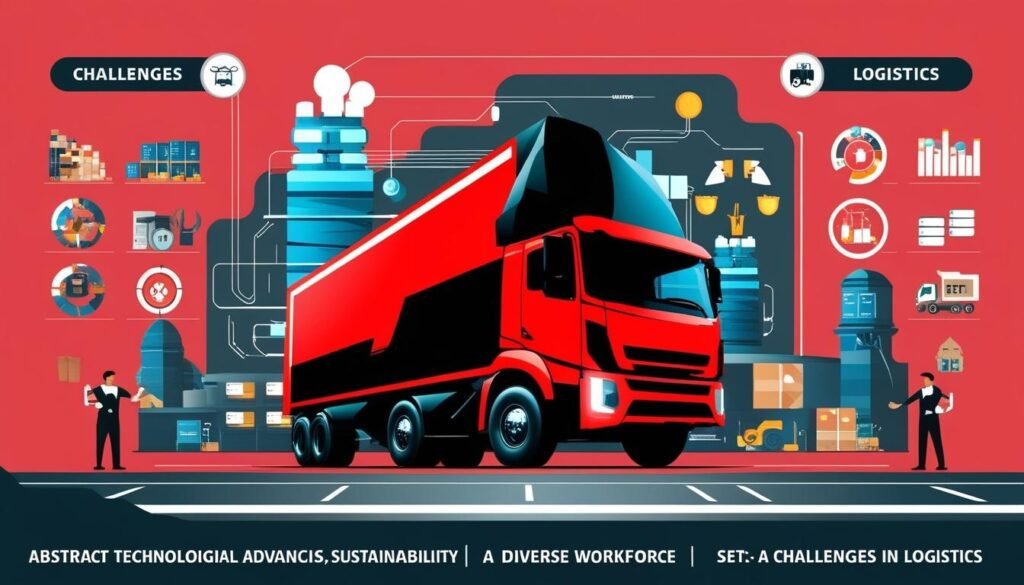As the industry braces for 2025, it must navigate geopolitical disruptions, technological advancements, and workforce demands while prioritising employee well-being and sustainability.
As the trucking and logistics industry steps into 2025, it faces a landscape marked by numerous challenges, including geopolitical disruptions, an evolving workforce demographic, and the pressing demands of sustainability. In light of these factors, industry players must proactively manage employee needs while integrating technological advancements into their operations.
The trucking sector is embracing automation and artificial intelligence (AI) to enhance efficiency across various operational facets. As highlighted by Truck News, this transformation underscores a growing demand for workers with technology-related skills. Employers are not only seeking candidates who are tech-savvy but are also focusing on training and developing current employees. This dual approach hopes to bridge skill gaps while simultaneously boosting employee satisfaction and retention rates.
AI is also reshaping the recruitment landscape within the industry. The publication reports that by 2025, organisations are expected to increasingly rely on AI-driven systems for recruitment processes. These systems can analyse resumes, conduct initial candidate screenings, and assess cultural fit, thus streamlining hiring procedures. This evolution in recruitment practices is anticipated to enhance the overall effectiveness of human resources departments, thereby contributing to smoother business operations.
However, attracting and retaining qualified drivers continues to be a pressing concern for the sector. With national freight transportation demand on the rise, companies must focus on targeted initiatives to attract younger individuals and women to the industry. Factors such as promoting work-life balance, providing competitive compensation, improving driver training, and addressing gender disparities are essential. The publication mentions that organisations can leverage resources from THRC to bolster their recruitment and retention strategies.
Another operational focus for 2025 is the prioritisation of employee well-being. Employers are increasingly recognising the importance of mental and physical health support for their drivers and staff. Comprehensive health and safety programmes, stress management resources, and peer support networks are becoming vital components of employee wellness strategies. As non-driving staff shifts to hybrid work models, human resource approaches must adapt accordingly to ensure support and productivity.
Sustainability is another key consideration for employers, shaping both recruitment efforts and overall business strategies. Potential employees are increasingly interested in joining companies committed to environmental sustainability and social issues. Business strategies that align with these values may serve as a powerful incentive for attracting mission-driven individuals.
Compliance with the Canadian Labour Code remains a significant concern as well. With several significant amendments set to take effect in 2025, including new provisions regarding disconnect rights and leave regulations, trucking and logistics employers must stay informed to ensure alignment with these legislative changes. The publication notes that enhanced programming, including a compliance calendar and a series of educational webinars, will help businesses navigate these regulatory requirements.
As the industry prepares to face the complexities of 2025 and beyond, opportunities for innovation and growth are present amidst the challenges. Networking events, such as the Women with Drive Leadership Summit in March and the Western Women with Drive in April, are set to foster engagement among leaders and change-makers looking to strengthen the sector’s future.
In summary, while 2025 presents a multitude of challenges for the trucking and logistics industry, the drive toward technological advancement, improved recruitment strategies, employee wellbeing, and sustainability positions businesses for potential growth. The multifaceted approach to these issues may ultimately shape a thriving, future-ready workforce.
Source: Noah Wire Services
- https://www.veltriinc.com/blog/what-will-the-trucking-industry-look-like-for-drivers-in-2025 – Corroborates the need for attracting younger individuals and women to the industry, promoting work-life balance, and focusing on driver mental health and wellness programs.
- https://www.veltriinc.com/blog/what-will-the-trucking-industry-look-like-for-drivers-in-2025 – Supports the importance of new training programs, creative recruitment strategies, and the emphasis on driver mental health and flexible schedules.
- https://www.fleetio.com/blog/trucking-industry-forecast – Discusses the market recovery from the Great Freight Recession, the importance of maintaining equipment, and strategic positioning in the market, which aligns with the operational focus for 2025.
- https://www.fleetio.com/blog/trucking-industry-forecast – Highlights the need for building stronger relationships with reliable shippers and being selective about lanes and contracts, reflecting the strategic approach needed in 2025.
- https://altline.sobanco.com/trucking-industry-statistics/ – Provides statistics on the increasing number of women in the trucking industry, their safety records, and the factors influencing their job satisfaction, which supports the recruitment and retention strategies.
- https://altline.sobanco.com/trucking-industry-statistics/ – Corroborates the importance of addressing gender disparities and the role of women in the trucking industry, including their higher safety standards compared to male drivers.
- https://www.veltriinc.com/blog/what-will-the-trucking-industry-look-like-for-drivers-in-2025 – Emphasizes the role of technological advancements and the need for continuous learning and adaptability among drivers, aligning with the industry’s technological transformation.
- https://www.fleetio.com/blog/trucking-industry-forecast – Discusses the growing demand in segments like refrigerated and specialized freight, which is part of the industry’s strategic positioning and growth opportunities.
- https://altline.sobanco.com/trucking-industry-statistics/ – Supports the focus on sustainability and social issues as incentives for attracting mission-driven individuals to the industry.
- https://www.veltriinc.com/blog/what-will-the-trucking-industry-look-like-for-drivers-in-2025 – Highlights the importance of employee well-being, including mental and physical health support, which is a key operational focus for 2025.















